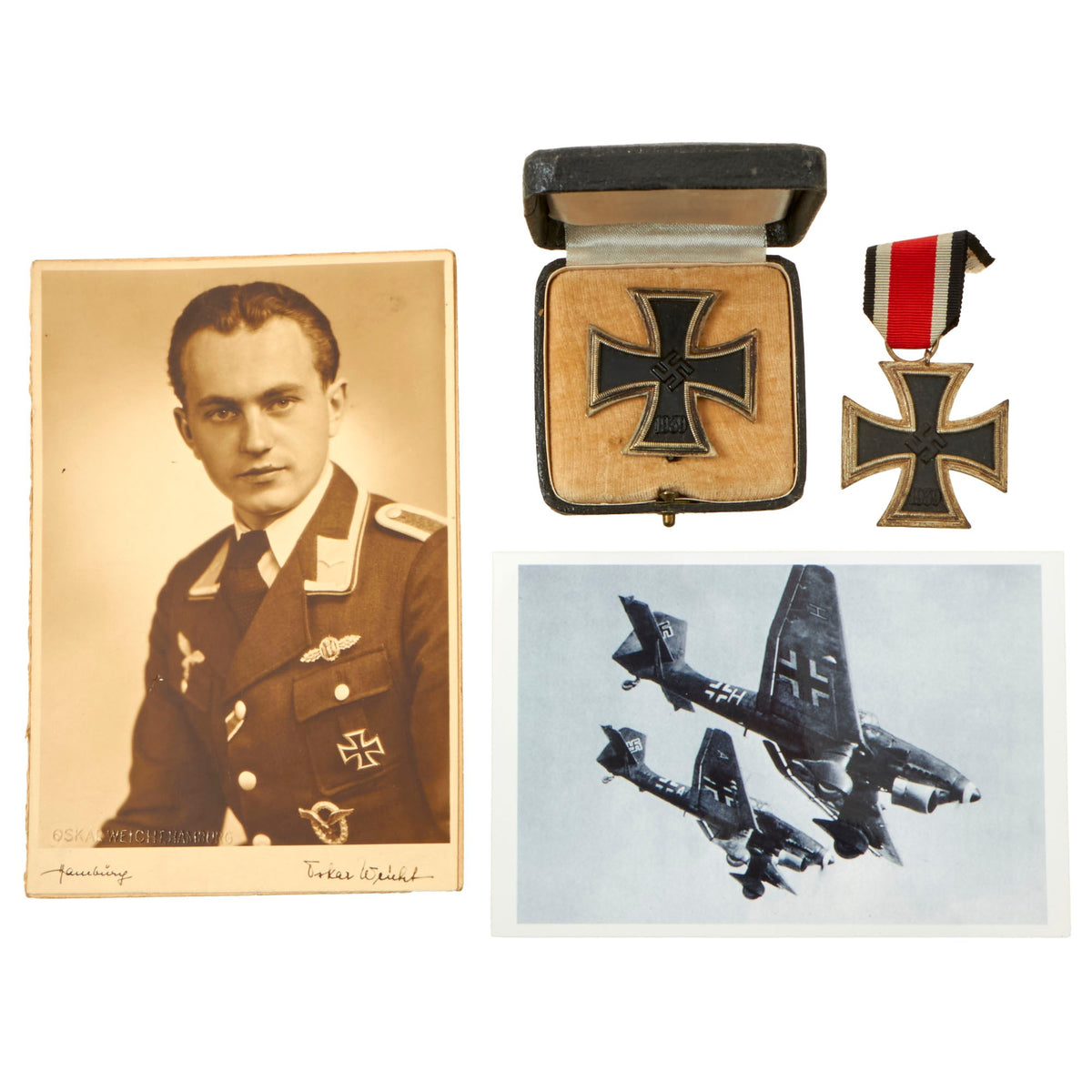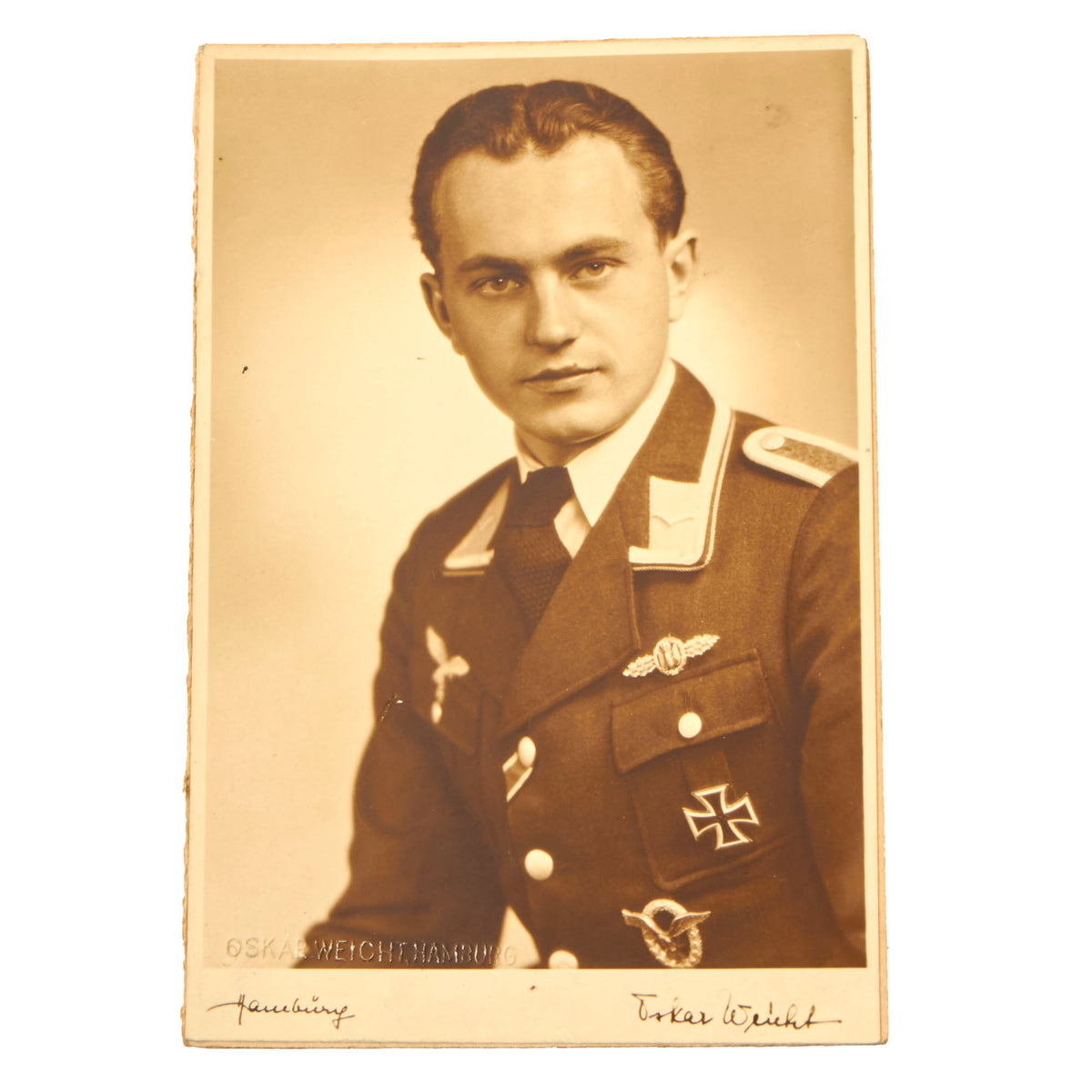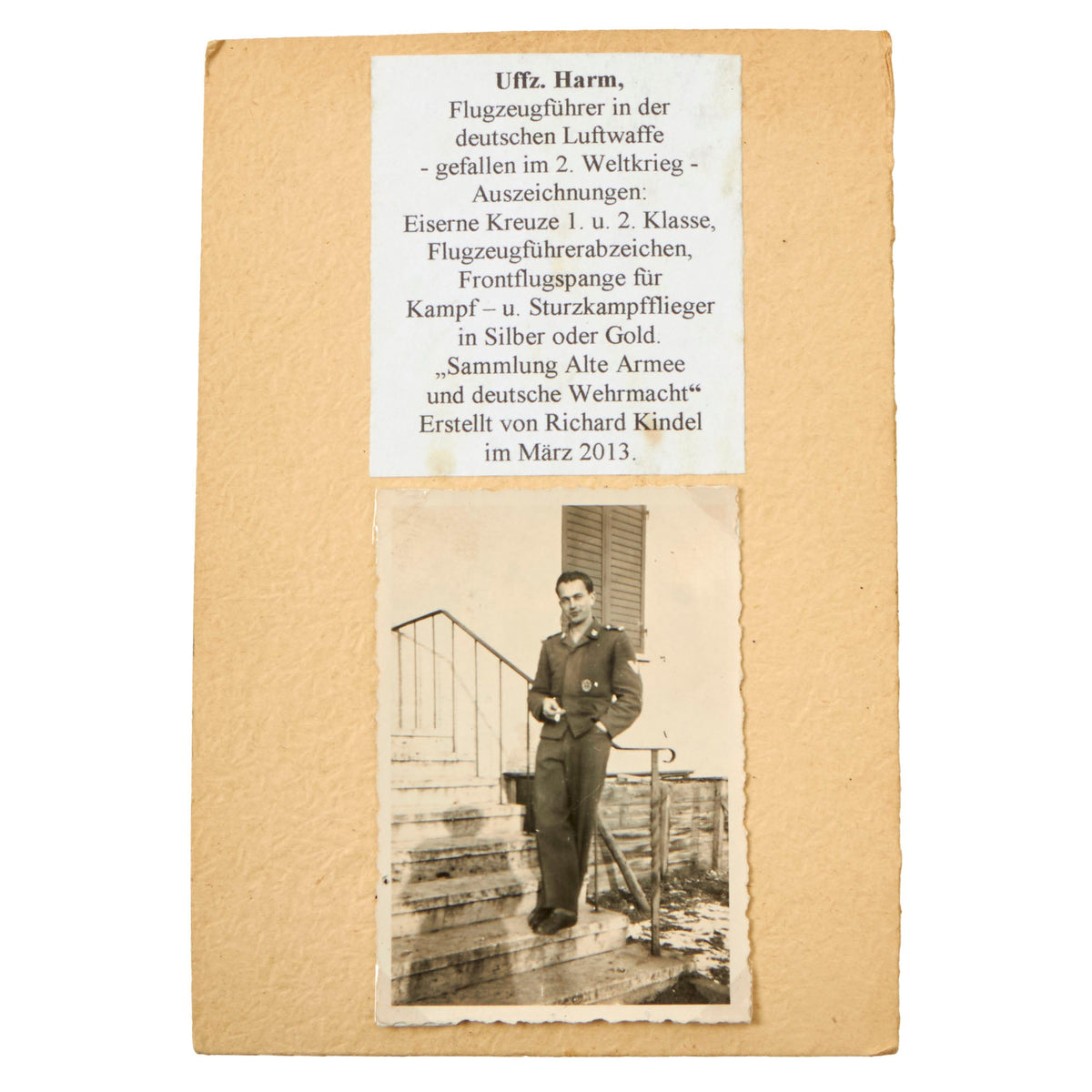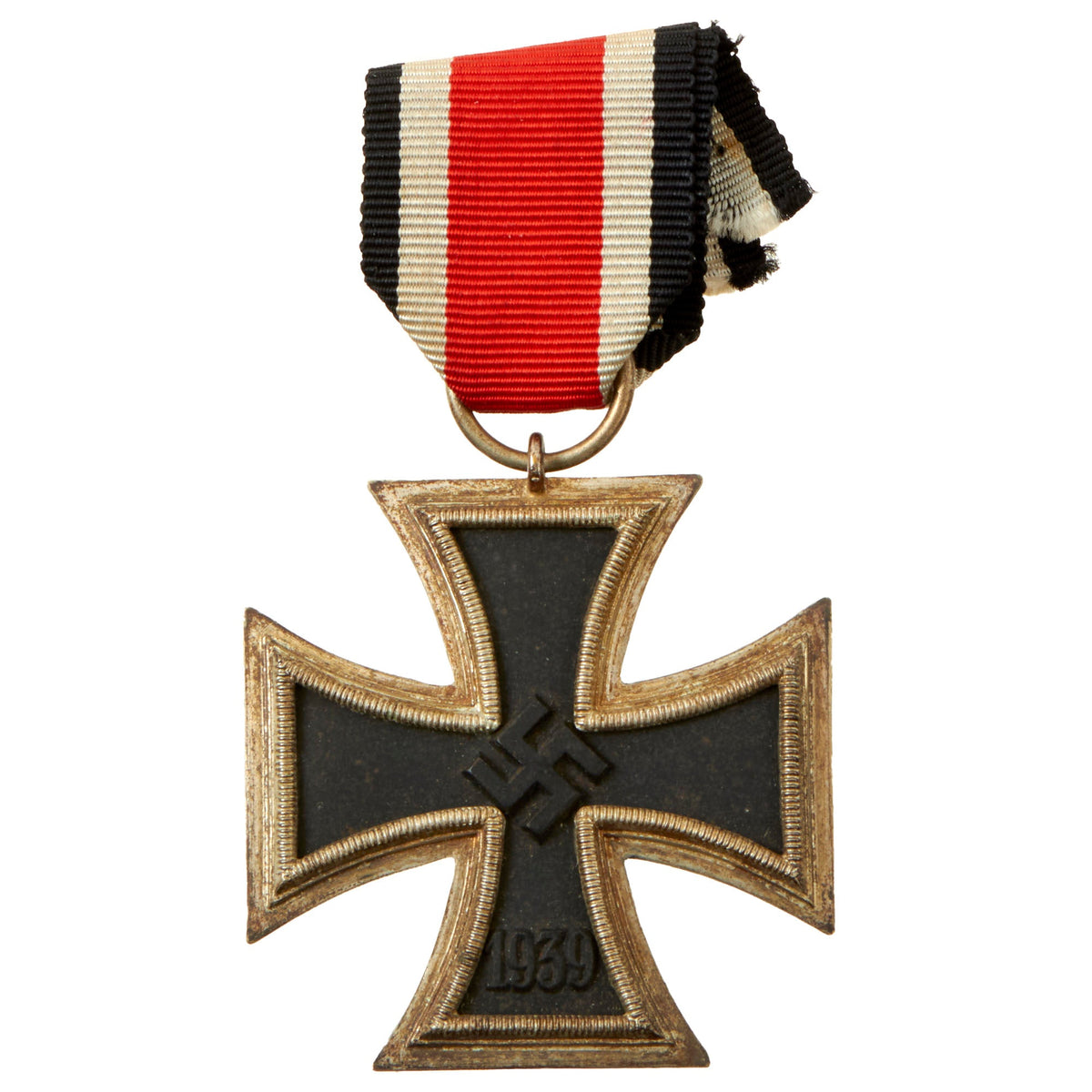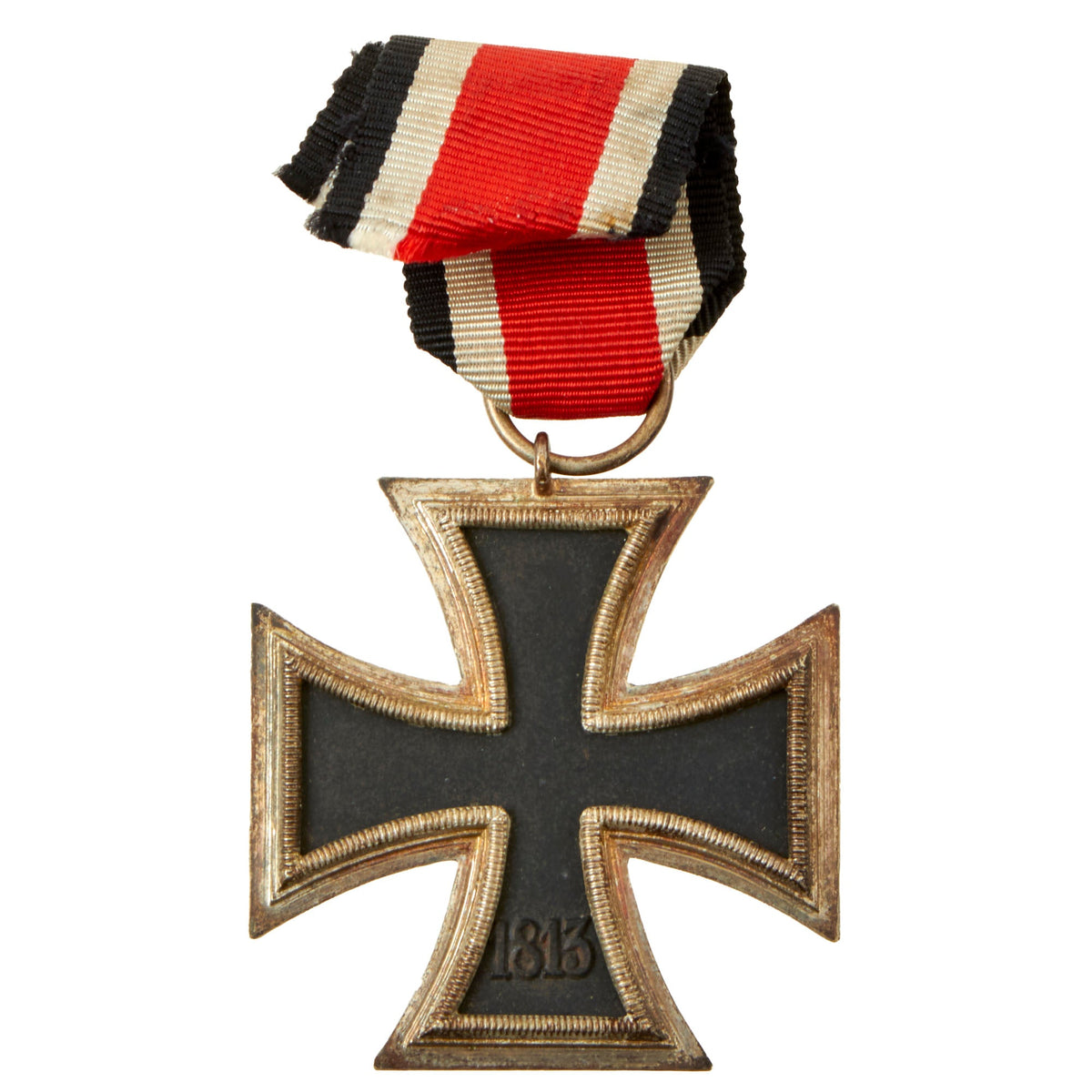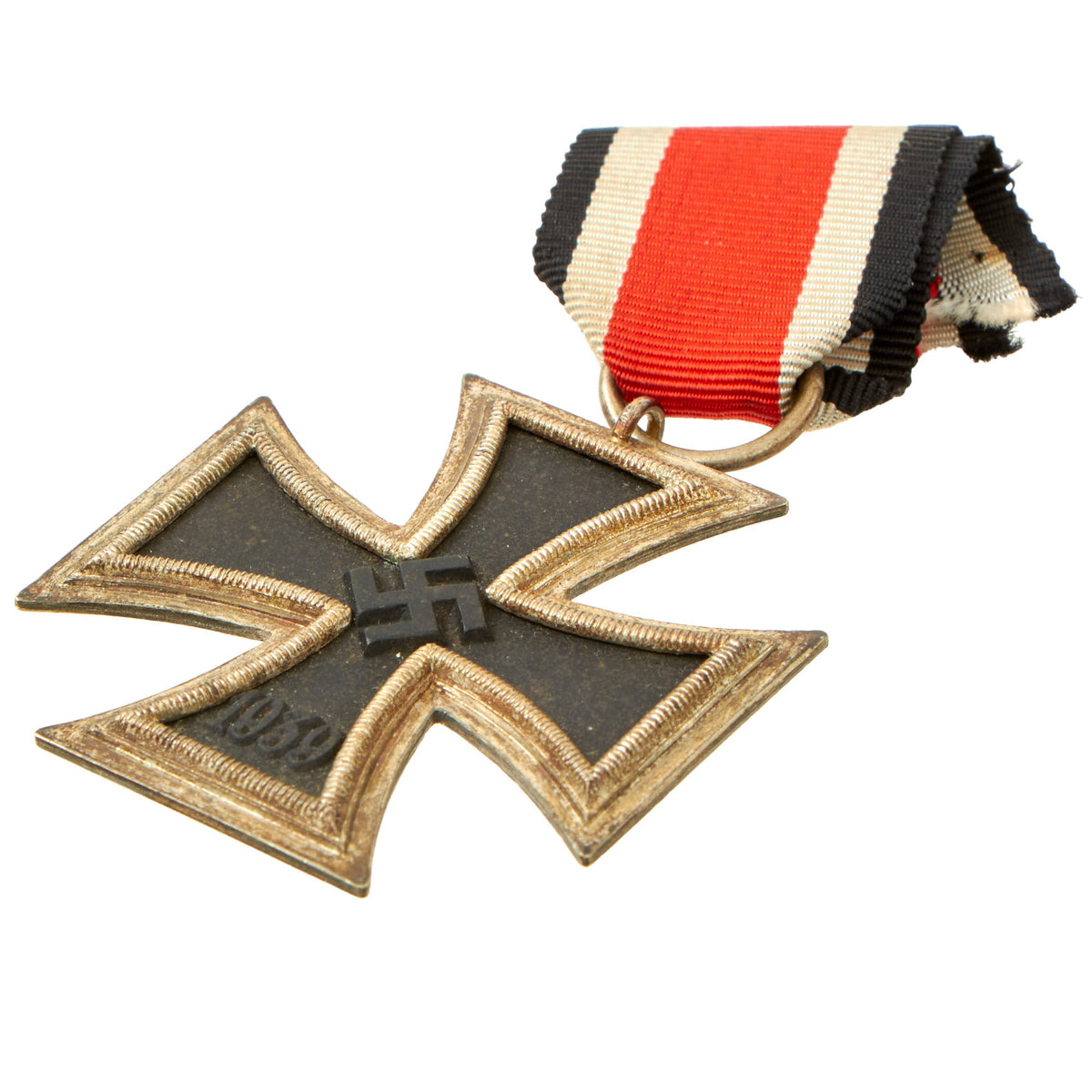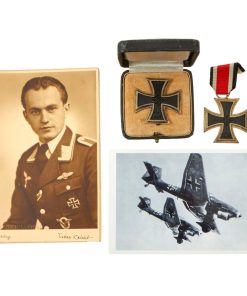Original German WWII Luftwaffe Award and Photo Grouping Named to KIA Pilot Unteroffizier Harms with EKII and Cased EKI Original Items
$ 795,00 $ 238,50
Original Items: One-of-a-kind grouping. This is a fantastic named Luftwaffe award and photo set, with two German WWII awards and three photographs, as well as some biographical information. We acquired this at a recent military show, and this came from a very well curated collection. The owner had apparently acquired the photos and awards directly from author Richard Kindel, who wrote several books on WWII Germany. The portrait 4″ by 6 ⅝” portrait photo has the following caption on the back in German:
Uffz. Harm,
Flugzeugführer in der deutschen Luftwaffe – gefallen im 2. Weltkrieg –
Auszeichnungen:
Eiserne Kreuze 1. u 2. Klasse, Flugzeugführerabzeichen, Frontglugspange fü Kampf – u. Sturzkampfflieger in Silber oder Gold.
„Sammlung Alte Armee und deutsche Wehrmacht“ Erstellt von Richard Kindel im März 2013
This translates to:
Uffz. Harm, pilot in the German Air Force – killed in WWII –
Awards: Iron Cross 1st and 2nd Class, Pilot Badge, Front Wing Clasp for Combat and Dive Bomber Pilots in Silver or Gold.
“Collection of the Old Army and German Wehrmacht” Created by Richard Kindel in March 2013
The large photos shows Harms, with the correct rank insignia for Unteroffizier, and wearing the EKI, EKII ribbon on a buttonhole, a Pilot’s Badge, and the Front Flying clasp for Bombers and Dive Bombers. There is also a small 2 ⅜” by 3 ½” on the back showing Harms in his field uniform, which looks to be from earlier in his career when he was an Obergefreiter. There is also a nice recent 6″ x 4″ photo print showing two Stuka dive bombers included. Definitely some great research potential in this grouping.
The included awards are both in lovely condition, with the EKII showing a bit of tarnish, and the ribbon is in very good condition. The slightly vaulted EKI in the case is also in great shape, as is the case, showing some tarnishing on the silver frame. Both have the matte paint on the core retained almost completely, with no flaking or oxidation, and really are great examples of the German WWII iron cross award.
Please also note the edge seams for authentication, which is not present on reproductions. Iron crosses were commonly constructed from an iron core sandwiched in a surrounding two part silver frame, normally the seam of these two silver parts is visible around the edge of the cross as is seen on these fine examples.
A really nice German WWII award and photo set, purchased from a great collection with some lovely provenance. Ready to research and display!
There is no more iconic German military award than the Iron Cross (Eisernes Kreuz, abbreviated EK). The long history of this order began during the Napoleonic Wars. It was established by King Friedrich Wilhelm III of Prussia in March 1813, backdated to the birthday of his late wife Queen Louise on 10 March 1813 (EK 1813), who was the first person to receive this decoration (posthumous). The award criteria changed somewhat with time, but generally speaking, Iron Crosses could be awarded for individual acts of bravery, or for leadership achievements on the battlefield. The design was created by a Karl Friedrich Schinkel, his choice of the black cross with silver outline was derived from the heraldic emblem of the Teutonic Knights.
There were a number of different type and grades of Iron Cross awards throughout its long history, but the basic details of the most widely awarded grades: The Iron Cross 1st Class and Iron Cross 2nd Class- remained the same. The first class award was a breast badge, with fittings on the reverse to allow it to be worn on the uniform. These fittings varied widely over time and from maker to maker, and could be a simple in and catch, a screw post and retaining disc, or more elaborate setups. The second class award was suspended from a ribbon, originally in the Prussian colors of black and white, later in the Reich colors of black, red and white.
On the original versions of these crosses, in 1813, the front of the iron core of each grade was bare, and only the second class award had ornamentation: a crown over the initials “FW” representing the King, a sprig of oak leaves, and the date 1813. The core was redesigned in 1870, when the cross was re-instituted during the Franco-Prussian War. The reverse ornamentation on the Iron Cross 2nd Class remained the same, but the front of the core on both grades now bore another crown, a “W” representing Kaiser Wilhelm, and the date 1870. This pattern repeated again when the cross was reinstituted for WWI- everything stayed the same, only the date 1870 was replaced with 1914.
The final reinstitution of the cross came in 1939. For this version, the front of the core for both grades bore a swas and the date 1939. The oak leaves, crown and royal initials were removed from the reverse, with only the date 1813 remaining as a reminder of the legacy of this award. In WWII, hundreds of thousands of Iron Cross First Class awards were bestowed, and four and a half million Iron Cross Second Class awards. Iron Crosses were made by a large number of authorized manufacturers. Some variants of these awards were mass produced in huge numbers. Others were made in very limited quantities.
The Iron Cross was normally a military decoration only, though there were instances of it being awarded to civilians for performing military functions. Two examples of this were civilian test pilots Hanna Reitsch who was awarded the Iron Cross 2nd Class and 1st Class and Melitta Schenk Gräfin von Stauffenberg, who was awarded the Iron Cross 2nd Class, for their actions as pilots during World War II.
Fast Shipping with Professional Packaging
Thanks to our longstanding association with UPS FedEx DHL, and other major international carriers, we are able to provide a range of shipping options. Our warehouse staff is expertly trained and will wrap your products according to our exact and precise specifications. Prior to shipping, your goods will be thoroughly examined and securely secured. We ship to thousands clients each day across multiple countries. This shows how we're dedicated to be the largest retailer on the internet. Warehouses and distribution centres can be located throughout Europe as well as the USA.
Note: Orders with more than one item will be assigned a processing date depending on the item.
Before shipping before shipping, we'll conduct a thorough inspection of the items you have ordered. Today, the majority of orders will be delivered within 48 hours. The delivery time will be between 3-7 days.
Returns
The stock is dynamic and we cannot completely manage it because multiple stakeholders are involved, including our factory and warehouse. So the actual stock may alter at any time. It's possible that you may not receive your order once the order has been made.
Our policy is valid for a period of 30 days. If you don't receive the product within 30 days, we are not able to issue a refund or an exchange.
You can only return an item if it is unused and in the same state as the day you received it. You must have the item in its original packaging.
Related products
Uncategorized
Uncategorized
Uncategorized
Uncategorized
Uncategorized
Uncategorized
Australian WWII Owen MK1 Machine Carbine SMG Custom Fabricated Replica with Sling Original Items
Uncategorized
Uncategorized
Uncategorized
Uncategorized
Uncategorized
Uncategorized
Armoured Fighting Vehicles of the World: AFVs of World War One (Hardcover Book) New Made Items
Uncategorized
Band of Brothers ORIGINAL GERMAN WWII Le. F.H. 18 10.5cm ARTILLERY PIECE Original Items
Uncategorized
Uncategorized
Uncategorized
Uncategorized
Uncategorized
Uncategorized
Uncategorized
